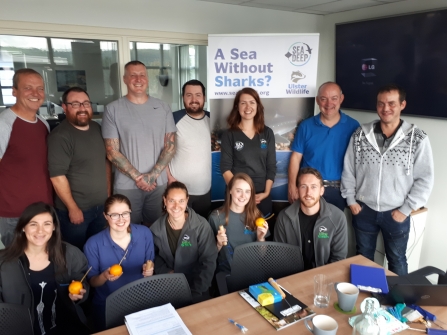On the 1st of September, Ulster Wildlife HQ turned into a training ground for tagging sharks! The Living Seas team were joined by anglers, volunteers and Nature Skills Trainees for a tagging training course led by the Sea Deep Project Coordinator, Rebecca Hunter.
When we all got settled with our cups of tea, Rebecca began to tell us all about the project. We were given some background on the biology of sharks, skates and rays – known collectively as ‘elasmobranchs’. This gave us a better grasp of why and how we take care when tagging them, and ways in which they are adapted to fit in well into their environment.
For example, skates and rays do not have a rib cage to protect their vital organs, instead the pressure of the surrounding water acts as a support. Therefore, if they need to be lifted from the water, it is important to make sure that their underside is well supported. We also learnt some very interesting shark facts including their ability to detect electrical fields (a sixth sense!) and that they can in fact be hypnotised!


